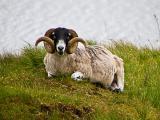
|
Dalesbred SheepThe Dalesbred is found in Upper Wharfdale and Central Pennines in England. The breed originated from the Swaledale and Scottish Blackface breeds. The breed shows a black face with a distinct white mark above and on each side of the muzzle. The legs are similarly colored. They have have no wool on either the face or legs. Both sexes have a round, low set of horns. |

|
Damara SheepThe Damara originated from the Hamites of Eastern Asia and Egypt and moved down to the present day Namibia and Angola. For many years, the sheep were in an isolated region of Namibia and thus remained free of influence from other breeds. Damara sheep can survive in a harsh environment and under poor nutritional conditions. |
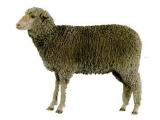
|
Debouillet SheepThe Debouillet was developed in New Mexico in 1920 from Delaine Merino x Rambouillet crosses.The breed is best adapted to the range conditions of the southwestern United States. The Debouillet is a medium-sized sheep with white hair on the face and legs. |
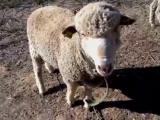
|
Delaine Merino SheepSeveral strains of Merinos evolved in the United States. The type "A" Merino was developed in Vermont through selection and inbreeding. This Merino carries a very heavy, wrinkly hide. In form, the type A is angular and has little carcass value. It is not advocated for commercial lamb and wool production. The "B" type Merino was developed principally in Ohio, a result of breeders selecting for a heavy fleece on a sheep that has a fair mutton form. |
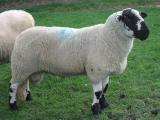
|
Derbyshire Gritstone SheepOne of the oldest British sheep breeds, the Derbyshire Gritstone was originally bred by the farmers of the Peak District to survive in a harsh environment and to thrive on the poor quality grazing found on the moors. They are concentrated today around Derbyshire, Cheshire, Yorkshire, and Lancashire, but Gritstone rams have been used widely on Welsh sheep to increase their size. |

|
Devon and Cornwall Longwool SheepThe Devon Longwoolled is a mutton and long-wool producing breed found in northern Devon in England. The breed is similar to the South Devon but smaller. Both sexes are polled. |

|
Devon Closewool SheepThe Devon Closewool is a medium sized, white faced, hornless sheep with a dense white fleece of medium length and staple which contributes to its valued quality of hardiness. The wool of the Devon Closewool is ideally suited to the home spinner and also modern manufacturing processes. It should contain no black fiber, and therefore commands a premium price. |

|
Dohne Merino SheepThe Dohne Merino is a synthetic, dual-purpose Merino developed by the South African Department of Agriculture using Peppin-style Merino ewes and German Mutton Merino sires. The progeny were interbred and selected for high fertility, rapid lamb growth rate, and fine Merino wool under commercial rangeland conditions. |

|
Dormer SheepThe Dormer is a cross between Dorset Horn rams and German Merino ewes (presently known as the South African Mutton Merino). It was a direct consequence of a series of extensive slaughter lamb experiments carried out at the Elsenburg Research Station of the Department of Agriculture since 1927 over a period of more than ten years. The name Dormers is an abbreviation of the linkage Dorset-Merino. |

|
Dorper SheepThe Dorper breed is numerically the second largest breed in South Africa. Their popularity has spread to many countries throughout the world, including the United States in 1995. The Dorper was developed in South Africa in the 1930's, through crossing of the Blackheaded Persian ewe (a native fat-tailed sheep) with the Dorset Horn (a mutton breed). |
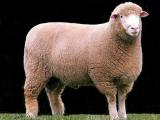
|
Dorset SheepDorsets are best known for their ability to produce a lamb crop any time during the year. History tells us that centuries ago when Spain wished to conquer England, Merino sheep were brought into southwest England and crossed with the Horned Sheep of Wales. The result was a desirable, all-purpose sheep that spread over Dorset, Somerset, Devon and most of Wales. |

|
Dorset Down SheepThe Dorset Down originated in England around 1800 by mating Southdown rams with the large Hampshire Down, Berkshire and Wiltshire ewes. The Dorset Down is a solid, medium sized, dark-faced, polled sheep. It has a short, close white fleece with wool round the cheeks, between the ears, on the forehead, and down the legs. |

|
Drysdale SheepThe Drysdale is a dual-purpose breed whose wool is used mainly for carpet manufacture. Drysdale sheep carry the dominant Nd gene, a mutant which occurred in the Romney breed. The Nd gene causes a high abundance of coarse, very hairy fibers, called halo-hairs. |